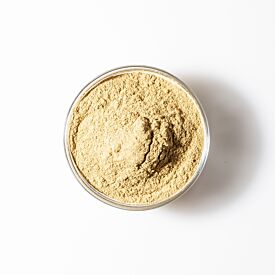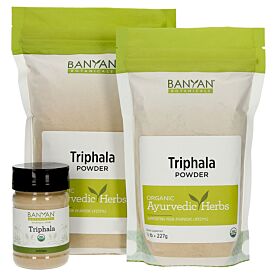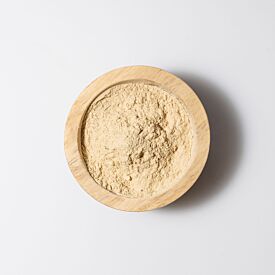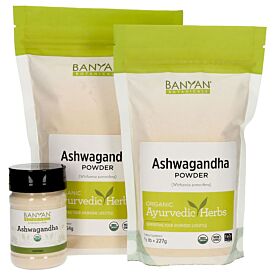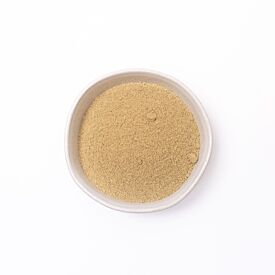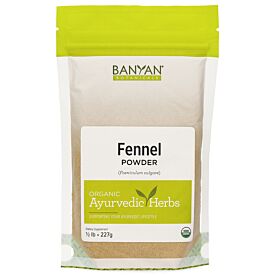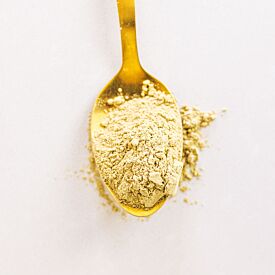An Ayurvedic Guide to Breast Health
Adjacent to the organ of the heart, the vital beating center of our being, lie the tissues of the breasts and chest. While breast health is often considered a topic for women, it is in reality a conversation that applies to all bodies and all layers of our being, body, mind, and soul.
Ayurveda seeks to support vibrant health throughout the system, and this area of the body often offers strong clues to nurturing greater balance, beauty, and self-love.
This guide is intended to help us see the breast and chest tissues as vital and dynamic, and to use this wisdom to support our own healing. Throughout this guide, we will discuss basic anatomy, general breast and chest health, and some nourishing beauty rituals for all.
In this article:
- Breasts, Body, Mind, and Soul
- Basic Breast and Chest Anatomy
- Tips for General Breast Health
- Daily Breast and Chest Massage
- Tracking Lumps and Bumps
- Herbal Support for Healthy Breasts
- Bodacious Beauty Tips
- Beauty and Empowerment
Breasts, Body, Mind, and Soul
The breasts have been used in symbolism since time immemorial.1 They have represented love and fertility, as well as sex and pleasure.
Dream interpretation theories show that in the deep recesses of our minds, for all people, breasts symbolize something even more integral—our primal need for motherly love, support, security, care, and nourishment, because their function as an organ is to give just that.
They can also symbolize our innate desire to be beautiful and desired and, therefore, can have a profound impact on our self-image.2
Thus, the breasts serve not only physical needs of sexual intimacy and breastfeeding but also energetic needs. Likewise, the state of our breasts and chest, and the changes that may occur there, are huge clues as to what emotions are being processed or need processing. In this way, caring for this sacred part of the body is a way of caring for our soul.
A beautiful statement by Susun Weed in her book Breast Cancer? Breast Health! sums up this idea.3
“We cannot nurture others fully or well unless we also nurture ourselves.”
Never have I seen an area of the body correlate so well with what is manifesting within a person’s heart and mind. Many people (not just women) often go to their doctors with a feeling of discomfort in the chest, without any cause found after numerous tests and scans. But the discomfort is real—the causes are often too subtle for Western instruments to detect.
In Ayurveda, we recognize these subtle sensations as signs of imbalance before the imbalance increases to manifest fully as a disease. So often, it coincides with relationship problems and other stressors in life.
More than once, I have seen skin breakouts in a strikingly circular pattern over the chest during periods of marked anger and frustration.
Similarly, I have seen changes in the tissue quality and new lumps arise, not so coincidently, during times of grief and pain. While most physicians, because of our training, would write off such shifts in the body, I would argue that we are doing a disservice by dismissing these changes.
We are living in a time of huge awareness around the breasts and chest. The media floors us with campaign after campaign for breast cancer awareness, and rightly so. According to a 2021 stat, 44,000 people die of breast cancer annually in the US.4
And while breast cancer is most commonly associated with women, it is in reality a disease that can affect anyone. There are a significant number of nonbinary and trans folks who also suffer from breast cancer,5 and it's worth noting that one in 100 breast cancer diagnoses happen in men.6
While these numbers are grim and the suffering endured by those with cancer very real, there are also areas of hope. A novel study done in Norway made it to the Archives of Internal Medicine with special recognition by the editors of the journal.7, 8
What this implies is that our bodies are dynamic and go through changes because of stressors, but they also have an innate intelligence that strives to get back to balance—a truth that Ayurveda has always known.

Basic Breast and Chest Anatomy
In this section, we'll focus mainly on the fatty breast tissue. But keep in mind that everyone, with or without breasts, has breast tissue.9 Therefore, this conversation applies to all bodies.
Our breasts are primarily made up of fatty tissue (known as meda dhatu in Ayurveda), glandular tissue for the production of milk, and significant lymphatic drainage. The lymph, a key component of rasa dhatu, is the most dynamic part of our breasts and exists throughout the tissue but is most concentrated with nodes in the axillary area, right underneath the armpit.
There is also important lymph drainage in the crevice behind the collarbone. The breasts themselves do not contain muscular tissue, but they do overlie the pectoralis muscle.
The shape of the breasts is largely determined by how much fatty tissue there is and the tone of the supportive tissues, the connective tissue, and ligaments.
Therefore, breasts come in an infinite number of shapes and sizes, and no one shape or size is better than another. All breasts are beautiful.
Ayurveda recognizes that these obstacles can be both physical, such as a blocked duct, and energetic in nature, as occurs with deep-seated emotions.
In Ayurveda, each tissue layer has certain by-products, just like milk can beautifully turn into butter and cream. Rasa dhatu’s by-products are said to be the top layer of the skin, menstrual flow, and lactational flow.
In this way, the health of the menstrual cycle is intimately connected with the health of the lactational and lymphatic flow in the breasts.
Of those that menstruate, many will notice that when there is more kapha-type menstrual flow with mucus, the breasts will feel more full and stagnant with kapha qualities as well. We will cover these differences in doshic breast types, but do note this correlation because often we can use our menstrual flow to understand the health of our breasts, and, vice versa, we can use any changes in our breasts to understand the health of our flow.
Similarly, we can use the health of our skin, particularly for those who do not menstruate or have stopped menstruating, to clue us in to how our rasa dhatu is doing.
As the rasa dhatu is the entire plasma and lymphatic system of our body, ensuring that there is proper hydration and that the dhatu’s flow is not inhibited in any way is of utmost importance to breast and chest health.

The Heart Chakra
Another anatomical note with profound implications is the proximity of the breasts to the heart chakra. In fact, we can consider the heart, breasts, chest, and other nearby organs and structures as physical extensions of this energetic center.
In addition to the examples given previously, there are numerous instances of people lactating during an intensely grievous period, as well as in intensely joyous occasions.
Many practitioners have also found breast masses resolve on their own with emotional and spiritual healing. Our heart is a deep emotional center, and I encourage us all to examine our emotional health any time changes to the breast and chest tissues arise. It is often the key to our healing.
The Doshas
From an Ayurvedic point of view, our doshic constitution is the orchestrator behind our physique, including the shape and size of our breasts and chest.
Vata people tend to have less meda dhatu and thus smaller breasts, whereas kapha people tend to have larger breasts and pitta folks may have more muscular tissue.
Our vikriti, or current state of balance, will also have an impact on the shifts and changes we may experience as we go through life. If you do not know your constitution or current state of balance, our Ayurvedic dosha quiz is designed to help you identify both.
| Table 1. Doshic Variations in Breast and Chest Tissue | ||
| Dosha | Balanced | Unbalanced |
| Vata |
|
|
| Pitta |
|
|
| Kapha |
|
|
While most of us will find ourselves falling into one of these categories, which corresponds overall with our doshic constitution, some people are a mix. For instance, people with strong vata in addition to kapha can often have a disproportionate distribution of fat, such that much fat will reside in the thighs and hips, while the upper torso and breasts are quite small.
Some may find their body to be overall quite slim, but their breasts to be relatively heavier and larger. If you find yourself in one of these situations, rest assured that this is not a sign of imbalance, provided that you do not find any of the symptoms in the unbalanced column of Table 1.
For those who menstruate, the monthly cycle can often give clues to help you better understand changes in your breasts. With a shift to a lighter flow, you may find your breasts shift to a slightly smaller size. If you are lactating, the effects are even more pronounced and you may find a decrease in milk supply. A change to a heavier or more mucous-type flow may correlate with changes to more swollen breasts.
A heavier flow of pitta may be accompanied by tender breasts as part of premenstrual symptoms. For more information on understanding and balancing the menstrual cycle, please refer to the Healthy Cycle Guide.
We can also take a look at our rasa dhatu, the plasma and lymph tissue layer, particularly if you are not someone who menstruates or have transitioned into menopause. Our skin is a great indicator of how our rasa dhatu is doing.
Ask yourself if it is dry, thinning, or flaky. These are signs of a depleted rasa tissue layer, and you could use some hydration. Likewise, if you have dry, cracking joints, then you may have a very dry rasa tissue layer.
On the other hand, if you find yourself with regular bloating, a feeling of heaviness and sluggishness, or increased weight, then you likely have too much kapha and thickness to your rasa tissue layer. In all these cases, you may find the corresponding changes and processes in the breasts as well.
Often, those who don't fit the stereotype of "someone who gets breast cancer" may not seek preventative checkups and miss the early warning signs of a serious imbalance. Paying attention to these slight shifts is an important part of prevention, and it can also help us understand which doshas may be out of balance.

Tips for General Breast and Chest Health
Given that the key is to ensure proper flow of lymph and a lack of stagnation within our breast and chest tissue, the primary doshas to address are kapha and vata.
Kapha balance is important to minimize overaccumulation and stagnation. Vata plays a supporting role with kapha by providing the energy for movement and flow to prevent such stagnation, but not at the expense of drying out the tissues.
Massage the Breasts and Chest Daily
This is the very best thing we can do for our breast health. Massage is effective at moving lymph.
Scientific evidence points to the positive benefits of breast massage, from supporting lymphatic movement and drainage to supporting healthy lactation.10 For example, numerous studies have found that massage decreases lymphedema, a common side effect after lymph node removal during breast surgery, where there is swelling from backed-up lymphatic fluid.11, 12, 13, 14
Breast and chest massage also has the potential to significantly improve discomfort, again likely caused by stagnation of rasa dhatu.15, 16 The stagnation of rasa is the precursor to most breast issues. As long as lymph moves, toxins can be removed, ducts do not become blocked, and less accumulation occurs.
Massage is also a classic Ayurvedic therapy for vata, which is quick to lodge itself in the heart center with emotions like fear, loneliness, and anxiousness.
Remember that the breasts are organs of giving and receiving. Also, recall their close proximity to the heart chakra. With that in mind, make this daily massage a ritual, a time for you to honor yourself and give yourself the nurturing you need. Light incense and candles. Turn off the phone and television. Go inward and nurture.
A Breast and Chest Massage Ritual
- You may begin with a whole body self-massage, or abhyanga, to ground yourself. Use an oil that is appropriate for your doshic constitution.
- Clasp your hands at your heart in gratitude for all that you and your body do and give on a daily basis.
- Open your hands over your heart and breasts. Your hands have tremendous healing potential. Through your hands, send the energy that your heart center is supported and in a safe place to release and heal.
- Give yourself permission to let go. Observe without judgment what thoughts and emotions naturally come up.
- Breathe.
- Dip your fingers into a balm or warm oil. I recommend Breast Care Balm, which is infused with herbs to promote movement and cleansing and scents that nourish the heart chakra. Alternatively, Castor Oil is great for breast massage, along with the scent of rose.
- Begin massaging one breast in a circular motion spiraling from the nipple toward the outside of the chest. Then begin at the nipple again and massage outward in linear strokes like the rays of the sun.
- Massage the armpit and the outermost quadrant of the chest extending to the shoulder joint. This is an area where lymph nodes are very concentrated.
- Massage above and behind your collarbone from the shoulder in toward your neck in long strokes.
- Repeat on the opposite side.
- Cover your breastbone with your hands, sending love, peace, and forgiveness.
- Observe. Breathe.
There are powerful marma points, or energetic hot spots similar to acupuncture points, in the area of the chest and breasts. You may incorporate these into your massage by pressing on them gently with the fingertips. If there is an energetic imbalance in one of them, it may be exquisitely tender. In that case, simply cup your hand over that spot.
| Table 2. Marma Points of the Breasts and Chest | ||
| Marma | Location | Relevance |
| Stanya Mula | On either side of the breastbone, at the level of the nipple. | This marma can relieve congestion, promote lymph circulation, and help with lactation.17 |
| Stanya Parshva | On the side of the chest, beneath the armpit in the seventh intercostal space. | Benefits are similar to those of Stanya Mula.17 |
| Hrid Marmani | On either side of the breastbone, in the third, fourth, and fifth intercostal spaces. | In addition to the benefits mentioned for Stanya Mula and Stanya Parshva, this marma targets the heart and lungs and overall functioning of the chest and heart chakra. It can relieve stress and calm emotions.17 |
| Hridayam | In the center of the breastbone, at the level of the third intercostal space. | This is the primary marma for the heart chakra.17 |
Cleanse Seasonally
Cleanses not only balance the doshas in our body but also promote the elimination of ama. Ama is an Ayurvedic concept that represents toxins in our body, which clog channels and prevent the natural cellular intelligence from working normally. Cleansing at the turn of the season prepares our body for each new season.
A study from Maharishi University showed that the traditional Ayurvedic cleansing therapy, called panchakarma, effectively reduces the level of many toxins in the body, specifically those that lodge in our breasts and chest.18
For more information on how to do a cleanse at home, read An Introduction to Ayurvedic Cleansing. And as a general daily practice, take triphala before going to bed at night to keep the colon clean.
Eat Organic and Pesticide-Free
Environmental toxins lurk in the food we eat every day. The breast tissue is largely made up of fat and even the milk made by the ducts has a significant fat content. Most environmental toxins are lipophilic, meaning they mix well with and live in fatty tissue.
Among these lipophilic and estrogenic toxins are bisphenol A, the chemical more commonly known as BPA that is in many plastics, and organochlorines found in pesticides. What is concerning is that many of these chemicals have been found in breast milk and irregular breast tissue.19, 20, 21, 22, 23
Hydrate and Bump Up Your Healthy Organic Oil Intake
Be mindful of the quality and quantity of your plasma. Do you have dry skin, chapped lips, anxiousness, or diminished enthusiasm? These are all signs of depleted rasa dhatu. Alternatively, do you have swelling, sluggishness, or a feeling of emotional heaviness? These are signs of increased or thick rasa dhatu.
The key is to have a balanced state. Vata is the main culprit in depleted rasa, and kapha is the culprit in excess and thick rasa. In either case, hydration maintains good consistency and flow of rasa while encouraging the elimination of toxins.
A good rule of thumb for fluid intake is to drink half your body weight in ounces daily—for example, if you weigh 140 pounds, then drink 70 ounces of pure water daily.
To help with hydration, these two drinks are good options:
- Warm up with ginger tea. A tea made with a teaspoon of fresh organic ginger root boiled in a cup of hot water is great for both vata and kapha imbalances in rasa since it is warming and liquefying.
- Cool down with an Ayurvedic electrolyte drink. For a drink that is a little cooler, squeeze fresh organic lime into a tall glass of water then add a teaspoon of organic sugar and a quarter teaspoon of salt.
To bump up healthy oils, which is particularly supportive if you find yourself to be dry, flax seed oil and hemp seed oil are good choices for oil supplementation.
Nurture Yourself
The following practices are not only nourishing to the soul but also therapeutic in releasing stagnation in the chest.
- Pranayama. A practice focused on moving stagnant prana, especially in the chest, pranayama is incredibly effective in freeing stagnant emotions. Bhastrika is highly focused on the chest and moving dead air out of the lungs and brings great movement to the entire chest area. Nadi Shodhana can also help balance and calm the mind.
- Yoga. Chest openers, such as Gomukhasana ( Cow Face Pose), Bhujangasana (Cobra), and other backbends, open the chest and relieve stagnation. Couple those postures with hip openers, such as Trikonasana (Triangle Pose) and Uttitha Parsvokonasana (Extended Side Angle Pose), to get the added benefit of moving lymph in the pelvis as well as the chest. A personal favorite is Prasarita Padottanasana (Wide-Legged Forward Bend) with the arms clasped behind the back.
- Meditation. Always allow time for inner reflection. Be an observer and simply watch emotions arise and give them permission to release. Take time daily to reflect and forgive. Scan your day before going to sleep and make peace with those who have hurt you and ask for forgiveness from those you have hurt.
Sweat!
While you may not appreciate sweaty armpits, those sweat glands are there for a reason—the release of toxins!
- Eliminate antiperspirants. Before you dismiss this recommendation as preposterous, think about all the toxins that are being trapped behind those pores. Instead, look for safe deodorants (different from antiperspirants) made of natural ingredients.
- Keep ama low to reduce body odor. It is amazing how your body odor changes considerably when you eat healthy food and prevent ama buildup.
- To help the process of sweating, consider sitting in a steam room or sauna, or applying direct heat to the chest after the breast massage.
- Perform regular, vigorous exercise, which not only helps you break a sweat but also is great for a healthy heart.
Bring Back Iodine
As we seek more natural foods, some essential vitamins and minerals, which are added to certain foods for supplementation, may decrease in our diet. Such is the case with iodine, found at higher levels in iodized salt and fortified bread.
Ayurvedic practitioner and author Dr. John Douillard advocates iodine as a bile thinner and lymph mover, allowing the body to drain away toxins. As a lymph mover, it can also be quite helpful if there is discomfort from stagnation in the breasts.24
While iodine supplementation is one possibility, other alternatives include natural sources of iodine like kelp, seaweed, seafood, spirulina, blue-green algae, and dandelion. Surprisingly, yogurt, cheese, and cow’s milk are very good sources of iodine, and asparagus, cranberries, and strawberries can also add significant iodine to your diet.
As with all foods and supplements, spend an extra few minutes to make sure your iodine source is free from contamination, particularly if harvested from the sea.
Avoid Underwire Bras
The wire of the underwire bra runs right along the bottom border of the breasts and the tail of the bra goes directly toward the armpit—exactly the path of those very important lymph nodes. Thus, simple logic tells us that underwire bras may not be beneficial for our breasts and the drainage of any toxins that have accumulated there.
For those who wear bras and are hesitant to let go of them, go try on some underwire-free bras! They are available in most lingerie stores and are becoming more popular, with great lift and sexier designs.
Tracking Lumps and Bumps
Thankfully, while most people at some point identify changes in their breasts, the vast majority of breast masses found are completely benign. They are usually cysts or fibroadenomas, condensed collections of glands and connective tissue in the breasts.
Sushruta, one of the ancient Ayurvedic physicians and also a surgeon, described how a benign tumor forms.
This “produces a round, bulged, and hard swelling.”25 The tumor can take on further characteristics depending on additional doshic factors, like inflammation and abscess formation if pitta is involved. Typical benign tumors and cysts of the breasts, however, are primarily vata and kapha in character.
What is important to note is whether the mass or lump changes or not. For those with a menstrual cycle, if you find that it disappears after the onset of your cycle and comes back again during the second half of your cycle and does not grow, then this is more consistent with fibrocystic changes.
This means that it is likely benign and the result of stagnation, along with sensitivity to hormonal fluctuations in your body.
A more persistent lump suggests stronger kapha stagnation and vata blockage. If you are not someone who menstruates, any new mass should be evaluated, but these general principles still apply.
As with all imbalances and disorders of the body, there is often a deeper energetic component to abnormalities in the breasts. We tend to hold very personal and deep hurts, regrets, and fears close to the heart. Many find that their breast changes are often manifestations on the gross, physical realm of these emotions stuck in the heart.
Time and time again, masses have been known to resolve on their own as these emotions are unwound and released. Dr. Christiane Northrup narrates several of these stories in her book Women’s Bodies, Women’s Wisdom.26
If the lumps and bumps are determined to be benign, Ayurveda has some recommendations to support healthy breast tissue. Again, please always have a physician take a look when you find a new mass, especially if you are postmenopausal or if you are premenopausal with a mass that has been present throughout a cycle or two. These are by no means recommendations to take place of an adequate examination.
Ushna and lepas (heat and pastes). Heat will melt kapha so that it can flow out once the channel is dilated. Heat also remedies vata channel constriction and blockage. Make a paste of punarnava powder and let it dry on the breasts, while also applying heat with a warm cloth.
You may sit in a hot steam sauna after applying and washing off the paste. A paste made of clay is also effective in relieving stagnation, but do apply oil afterward or mix the clay into the oil, as clay can be drying.
Castor oil. Castor Oil is penetrating and heating. Apply it in the morning and at night, or try massaging your breasts with castor oil followed by warmth from a hot water bottle or heating pad.
Use these options along with the general breast and chest health recommendations to optimize the health of your tissues even after the lump resolves.
Herbal Support for Healthy Breasts
- Women’s Support. Recall that our menstrual cycles and breasts are both by-products of the same tissue, so herbs that support the menstrual cycle generally support breast health as well. Women’s Support is a well-rounded product to help maintain balance of your menstrual cycle. It contains nourishing herbs like shatavari and vidari, as well as cleansing herbs like punarnava, coriander, fennel, and aloe.
- Kapha Digest. Taking one to two tablets of Kapha Digest before your meals will help break up kapha stagnation in the tissues and especially lymph channels. You can also take a half teaspoon (or cut it down to a quarter teaspoon if you find the herbs too heating) of Trikatu powder, which is the powdered form of Kapha Digest.
- Aloe vera. The ancient Ayurvedic texts love using aloe vera to soothe and strengthen the channels of the body. It is nourishing, cleansing, and especially relevant if you have more pitta qualities.
- Licorice, tulsi, and fennel. All three herbs—licorice, tulsi, and fennel—generally support lymph and its flow. You can mix these powders and make a tea or add them to your next meal.
- Anantamul. Known as a well-rounded herb for cleansing excess pitta, anantamul supports flow through the lymph, reproductive tract, and urinary tract. Adding this herb as a half teaspoon to a cup of warm milk is extremely nourishing.
- Shatavari. Another herb that increases in potency when added to warm milk is shatavari. This herb is fantastic if you find yourself on the vata end of the spectrum, with dryness throughout your body. Unlike many of the herbs described here as cleansing, this herb is very building, nourishing, and lubricating. Shatavari may be a significant phytoestrogen, so use this herb with some caution if you know you are estrogen sensitive.
Consult an Ayurvedic practitioner to see if these and any other herbs would be appropriate for you.
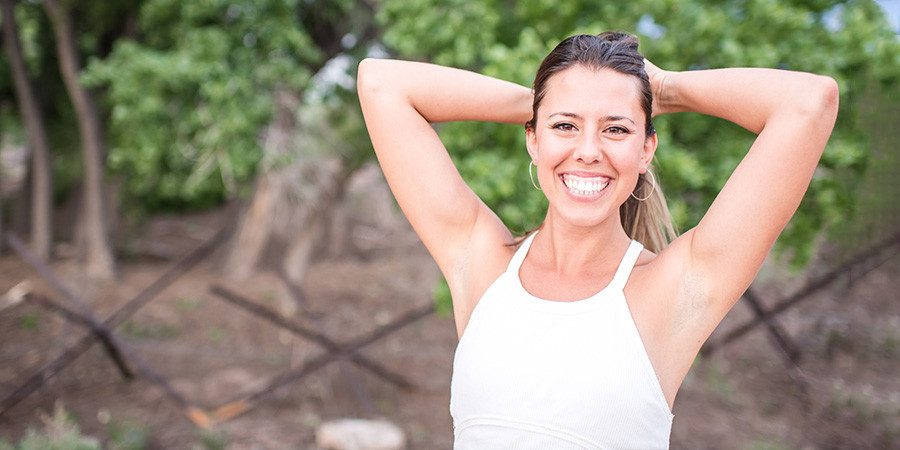
Bodacious Beauty Tips
Let’s end on a, literally, uplifting topic. First, I’ll reiterate that there is no right size or shape of the breasts and chest area. What is popular today may not be so popular tomorrow. All bodies are beautiful. But, nonetheless, breasts are an important part of our physical appearance. For those who want a little augmentation, here are a few ideas to try.
- Beauty Balm. What was once called Banyan Botanicals’ Breast Balm is now Beauty Balm. Since the prime ingredients are ashwagandha and shatavari, it has great building effects. As such, this balm tones, firms, rejuvenates, and nourishes the tissues. It also has herbs, such as licorice and fennel, that are great for lymph flow.
- Egg whites. Whisk two egg whites in a bowl and apply the whites to your breasts until they dry. To make it a spa-like experience, add a few drops of rose and lavender essential oils, which benefit the heart chakra. Wash off with a shower.
- Breast mask. Make a paste of equal parts of ashwagandha, licorice, and fenugreek powders. Apply as a mask to the breasts. Wash off in the shower once the mask has fully dried.
- Regular massage and exercise. Massage keeps the tissue of the breasts and chest toned and strong, as it does in any other part of the body. Instead of massaging with castor oil (a more cleansing oil), try almond oil or Sesame Oil.
- Excercise. Exercise strengthens supporting ligaments and underlying muscles for better lift and shape. A particularly great exercise that brings a lot of movement to the chest area is swimming. The right yoga routine, full of poses concentrated on working the upper torso, with backbends and poses that lift the arms, can do the same.
- Good posture. When we sit or stand with our shoulders pulled back and spine straight, the breasts are well supported, as opposed to the torso hanging forward in a slouched posture.
Beauty and Empowerment
We've discussed everything from chest health to breast beauty. We've explored both the physical and emotional dimensions of breast and chest wellness. We hope you leave this guide sensing that this area of your body is both dynamic and nurturing, and with a feeling of empowerment around what you can do to support your own health. We have so much to offer this world, and nothing should hold us back. So stand tall and proud, with a sense of acceptance, abundance, and confidence.




